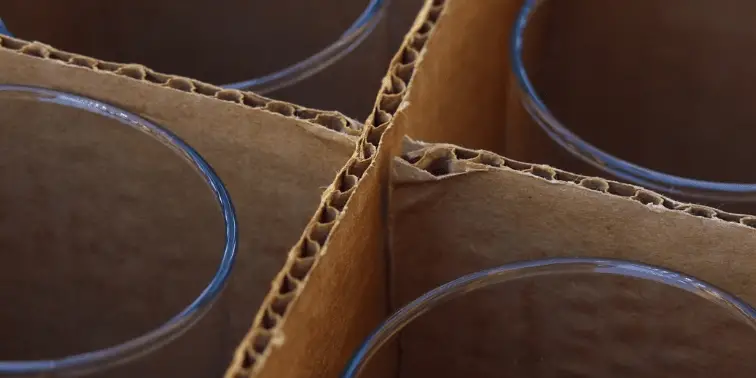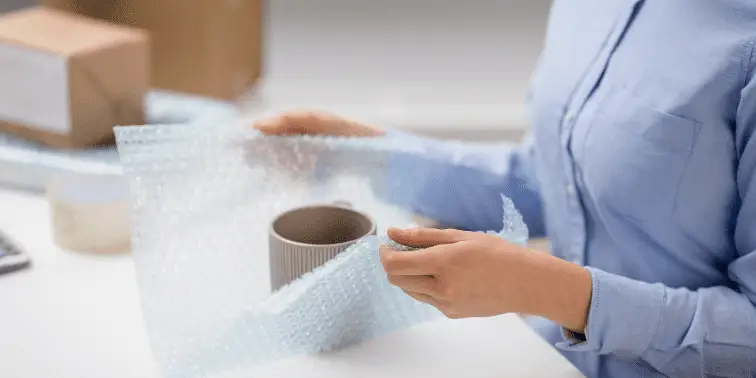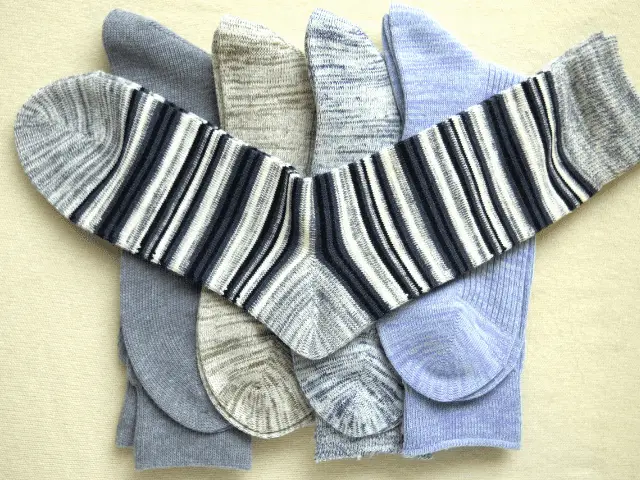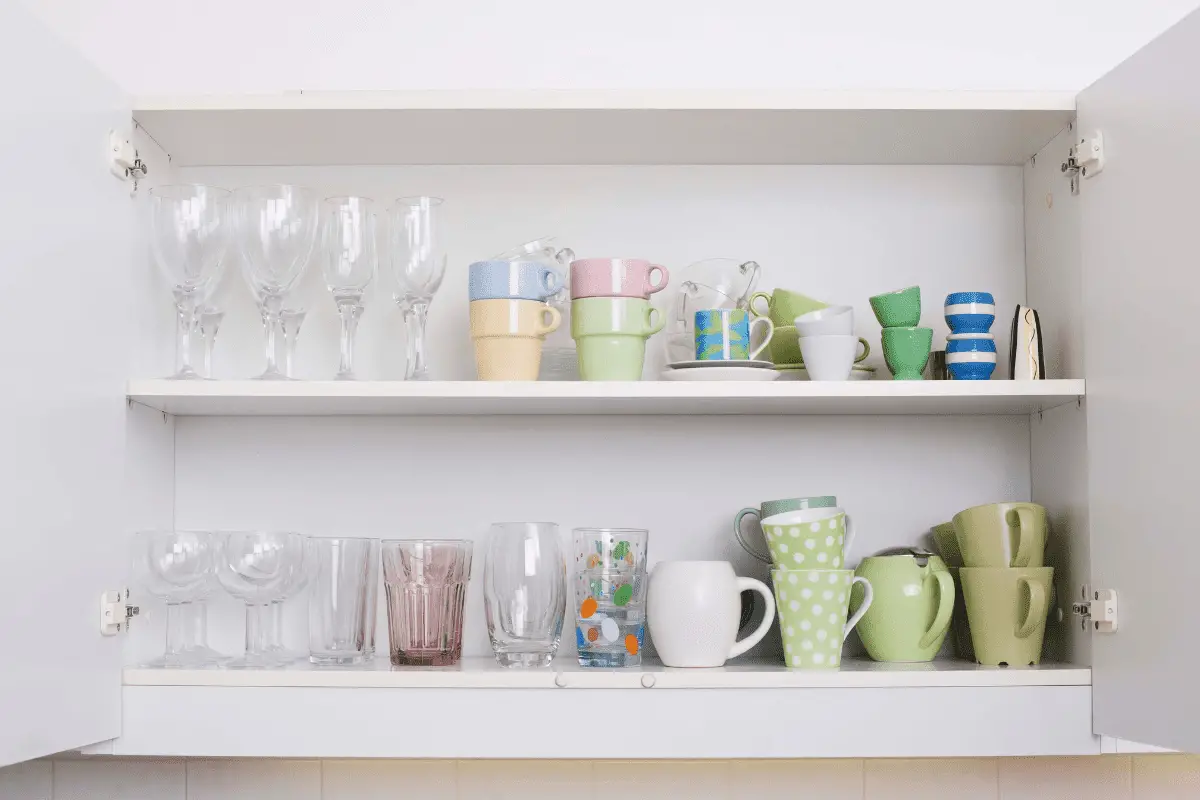The kitchen may be one of the most daunting rooms to pack in the entire house. Significant amounts of the items are breakable and oddly shaped. Even if you do not have a novelty mug collection, you are likely packing up all kinds of glasses and mugs.
Glasses is a general term that can refer to tumblers, shot glasses, high balls, wine glasses, crystal stemware, empty bottles, and many others. While some glasses will need special instructions for packing, the tips listed below should apply to almost all types.
Generally speaking, glasses and mugs are difficult to pack because they are not stackable. Also, if they knock together during transport, there is a high chance of breakage.
Thankfully, packing supply stores sell specific packing supplies for glassware. On top of that, bubble wrap and bubble sheets are easy to purchase and protect your glassware and mugs.
I have never packed my glassware particularly well because I had no deep affection for it. That being said, even my minimal wrapping led to zero causalities. If you have fine stemware that must be protected, this list of tips will give you exactly what you need to protect it.
Table of Contents
How to Pack Glasses and Stemware

Proper Supplies
The easiest way to do the best job is to have the best equipment possible. Use the specific packing supplies sold for glasses, stemware, and mugs. You will find excellent leftover boxes from liquor stores or grocery stores. In fact, these boxes are usually heavy duty and will often have individual dividers.
First, you will want to collect items for wrapping your glassware. These can vary based on your preferences from recyclable paper, bubble wrap, or cloth. In the end, pick what works best for you.
Second, select a box that is heavy duty and can support the weight of the glassware. Many stores sell dividers for glassware to keep them from knocking into each other.
Add Cushioning to Bottom of Box
The bottom of your box will need a layer of cushioning. Ultimately, the bottom of the box will take the greatest impact from moving and the greatest pressure from the weight of the items inside of it.
A layer of cushioning gives your possessions some protection against the bumping and jostling of moving. If you are looking for a cheaper alternative for cushioning, turn to newspaper. It is easy to find and crumples into great padding.
Wrap All Glasses
Your items will be protected the best if you wrap them in some form of cushion. As stated above, the form of protection can be paper, bubble wrap, or cloth. No matter what you choose, wrap all glassware in at least one layer of wrapping.
If the item is fragile, you will want to add an extra layer of protection. For identical glasses, you can utilize one piece of wrapping paper with a small layer wrapped in between.
Wrapping stemware may seem particularly daunting. However, just wrap the stem first and then continue up the glass. This will provide the best protection for the delicate stem.
Place Heaviest and Thickest Glasses on Bottom
In order to protect all the items inside the box, you will want to put the heaviest glassware on the bottom of the box. With this in mind, you ensure that heavier items shatter nothing below it.
The heaviest items on the bottom will give you the strongest base. You will add lighter and more delicate stemware as you create your layers.
Add Cushioning In Between Layers
If you do not plan to use boxes with dividers, you will plan to layer your glassware in the box. Try to make the layers as flat as possible. After this, you can add additional cushioning in between layers. The cushioning layers do not need to be thick, but they are still necessary.
Continue Layers to Good Box Weight
As long as the box stays a good weight, you can continue to layer glassware until you reach the top of the box. If the box feels insecure and unstable, you will want to stop even if there is free space. You may even want to remove some items until the box is sound.
In the case that the box’s weight is fine, continue the layers all the way to the top. Place the most fragile items on the top. This way, there will be no added force on these items.
Add a Final Layer of Cushioning on Top
Just like our cushioning in between layers, you will want to put an added layer on top for cushioning. This will protect your most fragile items during transport. This will take some planning. There needs to be enough room to add the cushioning. As stated above, newspaper is an excellent final cushioning choice.
Label the Box as Fragile
In the sea of boxes, you will probably forget which boxes store all those fragile items. Label your kitchen boxes properly. It may be best to not only label what room it is from and the contents but also with words like “FRAGILE” and “DO NOT STACK”.
We are packing the most fragile items on top of these boxes. Stacking any other box on it while moving or in the moving truck may be catastrophic to your possessions.
How to Pack Mugs

Follow the Same Wrapping Directions as Glasses
Wrapping mugs does not differ from wrapping glassware.
In fact, most mugs are naturally very thick and a bit more robust than a lot of glassware. To protect your mugs, wrap them in the same way you do the glassware. Paper, bubble wrap, and cloth are all excellent choices for wrapping. Unless small enough, you cannot use the divided boxes because of the handle.
Add an Extra Layer for the Handle
All mugs sport a useful handle on the side. It protects your hands from the heat of that morning coffee or tea. However, it is less helpful when packing them up. The joints of that handle are the weakest part of the mug.
Wrap the handle with an added layer of cushioning. This will give you the best shot to protect those handles. Insert extra paper or cushioning throughout the box to protect them.
How to Pack Glasses without Packing Paper
Use Clothing or Towels to Wrap Fragile Items
In this big move, you will also need to move your clothes. Why not combine the need of packing your clothes and dishes together? Clothes make an excellent choice for wrapping your fragile items.
Both small towels and shirts are the best options. Wrap the glassware or mug in the apparel and stack as explained above.
Use Socks to Pack Glassware

Even socks are great alternatives for packing supplies. Socks can be inserted into the glass itself for protection. Also, you can put the glass into the other sock. We know socks provide superb cushioning to our feet, so let’s apply it to our glassware as well.
Ultimately, packing glassware and mugs is a simple process. First, collect the proper materials to ensure the safest ride for your items. Second, wrap and protect each glass. It is best to do it individually. Finally, place them in the box in even layers with the heaviest items on the bottom.
Add as much cushioning as possible in between layers. No matter what packing method or materials you choose, following these standard steps will lead to great success in packing your glassware and mugs.
Final Thoughts
Packing Mugs and Glasses for a move can be very intimidating and a whole lot scary. Glassware is not only fragile, but glassware can be really expensive. Most of us also have that favorite coffee mug that would be devastating if it broke during the move.
Packing fragile items like mugs and glasses generally comes down to getting the proper packing supplies, taking your time to pack each item properly and labeling everything so it gets the attention it deserves during the moving process.
Follow these tips and hopefully, you’ll be drinking coffee from your favorite (and unbroken) mug in your new home soon!

